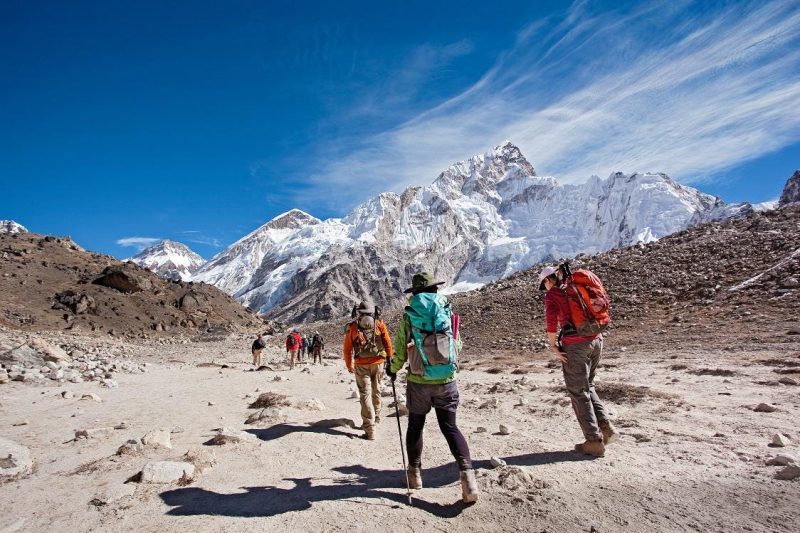The EBC Trek is a high-altitude trek that is challenging and rewarding. This trek takes you through some of the most beautiful landscapes in the world. If you have the right equipment and attitude, you can conquer the challenge. This trek is recommended for people who enjoy mountaineering adventures, and those who have a passion for adventure.
Mountaineering adventure
If you are looking for an adventure that will test your physical limits, consider undertaking a mountaineering adventure on the EBC Trek. The trek is a twelve to fourteen day trek, starting in Lukla, and includes eight to ten miles of trekking each day. Rest days and acclimatization days are also required.
To begin, you’ll need to obtain a Sagarmatha National Park entry permit. If you plan to climb Everest, you’ll also need a pass to access the Gaurishankar Conservation Area. In addition, you’ll need to be physically fit. You’ll need to do cardio exercises such as running, swimming, or cycling before you head out on the trek. Depending on your level of physical fitness, you may even want to consider doing some short day hikes to get your blood pumping.
There are two main routes to Everest base camp. The shortest is the traditional EBC Trek, which can take between 14 and 20 days for experienced high-altitude trekkers. You can also opt for the Three Passes Trek, which includes the high-altitude passes of Cho La (17,782 feet) and Renjo La (17,585 feet). If you have more time, you can choose to include Gokyo Lakes and EBC to your trek.
High-altitude trek
High-altitude EBC Trek: This trek is perfect for those who are interested in tackling the highest mountain in the world, but have little experience hiking at such high elevations. It involves 12-14 days of full-on trekking, with several days spent acclimatizing. The trek usually starts in Lukla, Nepal, and covers about 80 to 130 miles roundtrip. Each day is broken up into eight to ten mile sections, with the remaining time spent at lower altitudes.
The high-altitude EBC trek requires good physical fitness and a high tolerance for high altitude. The base camp is located at 5364 meters above sea level, so preparation is key. A few days before the trek, fly into Kathmandu, Nepal’s heady capital, where you can explore UNESCO temples and sample the delicacies of local curry houses. Getting to Kathmandu is an adventure in itself, so be sure to arrive at least two days before your trek start date.
It is important to pack clothes that can be easily changed according to weather conditions. This trek can be harsh on the body, so make sure you pack layers. During winter months, you will need extra warm clothes to keep warm.
Travel to Everest Base Camp
Travel to Everest Base Camp is an unforgettable experience that teaches you about the wonders of nature and the culture of Nepal. As the highest peak in the world, Everest is a mystical experience that can inspire you and give you the knowledge to appreciate the Nepalese culture and religion. The best time to visit Everest Base Camp is during pre-monsoon and post-monsoon seasons. However, you can also go during the other months if you’re planning to trek early in the morning or on a day when the weather is more favorable.
Travel to Everest Base Camp is not suitable for everyone, so consider your level of fitness and the time of year you want to travel. If you’re going to be trekking at high altitudes, try to avoid visiting Everest in the winter as the weather can be harsh. Days are shorter and nights are colder, so dress in layers and consider getting a guide.
Altitude challenge
The EBC Trek is a strenuous trek that requires a considerable amount of acclimatization. The trip starts in Lukla and lasts 12-14 days. During the trek, you’ll cover 80 to 130 miles, divided into sections of eight to ten miles a day and thirteen to sixteen miles a day. During the trek, you’ll spend the day climbing high before descending to sleep at lower altitudes to prepare yourself for the altitude.
The first part of the EBC trek is the most difficult. It involves a three-hour trek through a rough and bumpy path. The altitude is already noticeable, but if you take the proper phases of your walk, you’ll be able to handle the challenge. By the end of the trip, you’ll be rewarded with stunning views of the world’s highest peak and the surrounding mountains.
After you’ve gotten used to the altitude, you may notice that the distances aren’t that large. However, the challenge is more of an energy challenge than an actual physical challenge. As you climb, you must pay special attention to your energy level and stay hydrated. You’ll want to avoid alcohol, which can cause you to get dehydrated.


